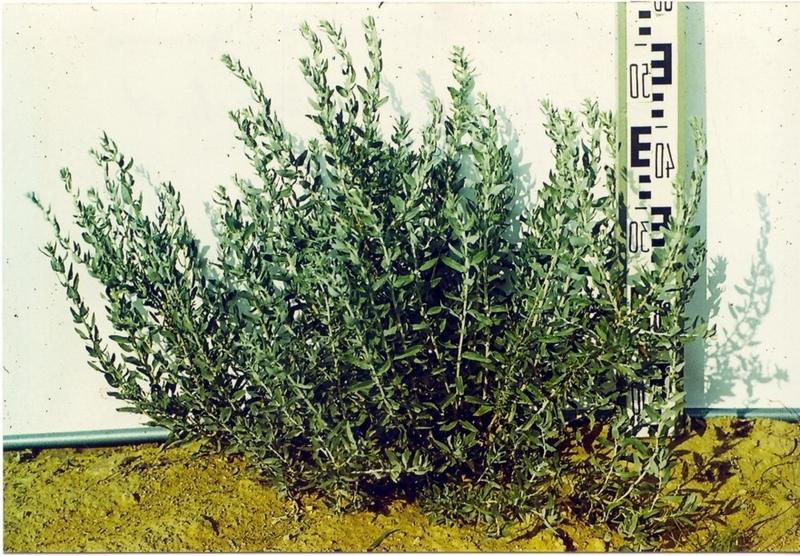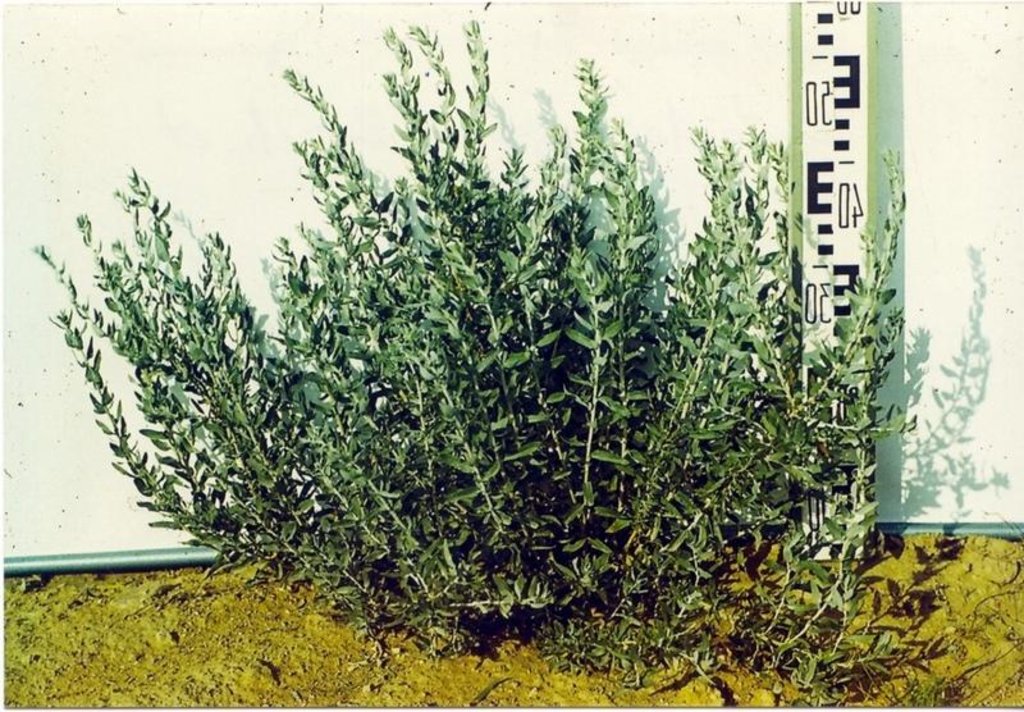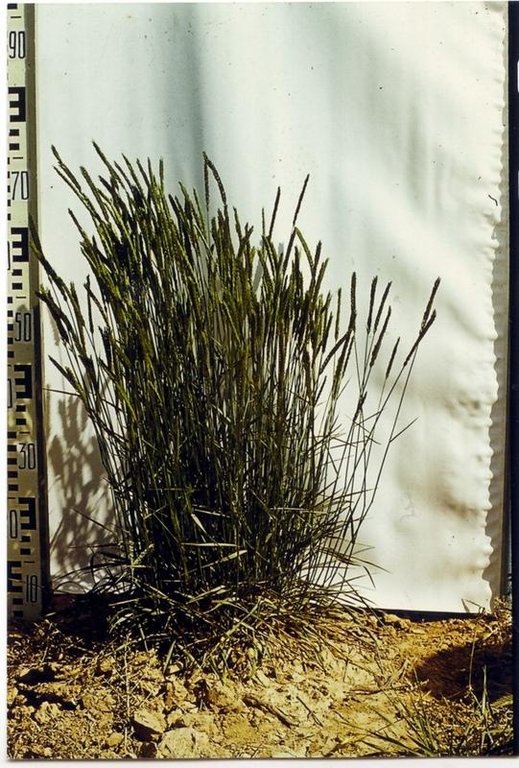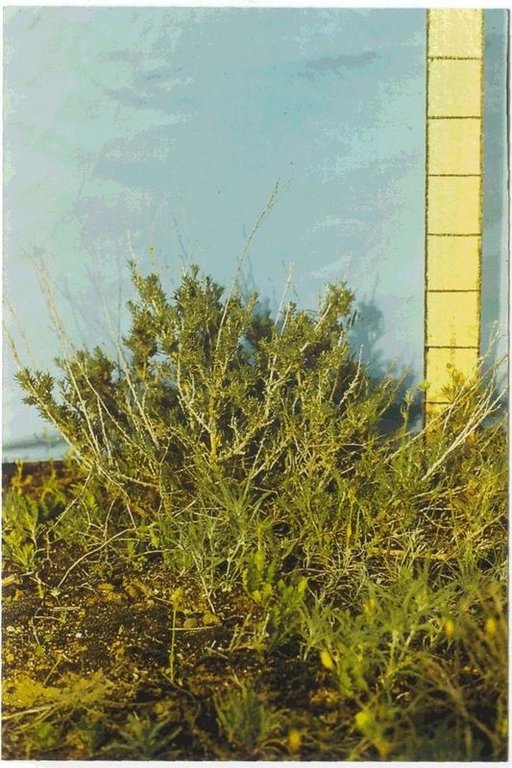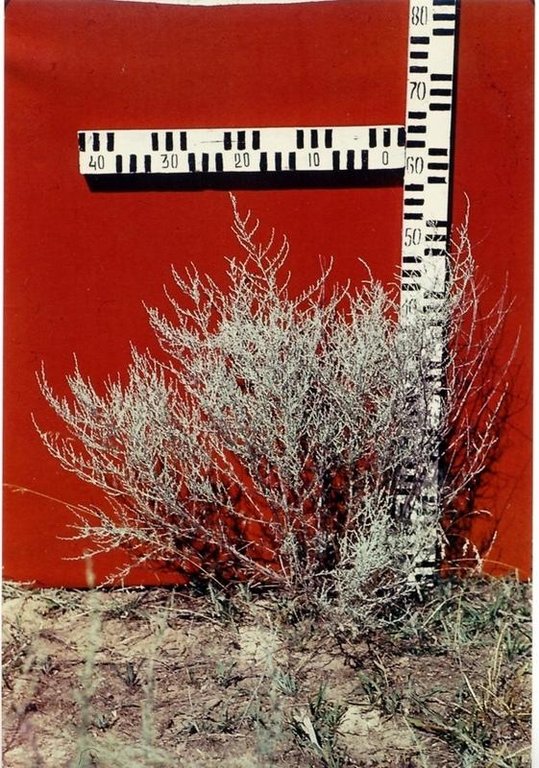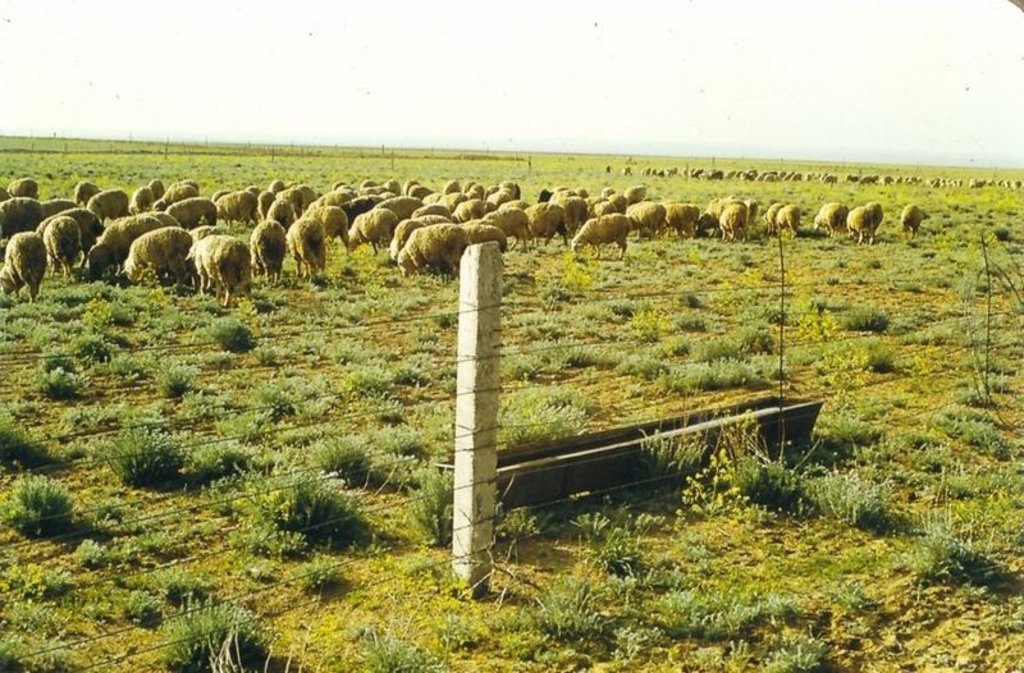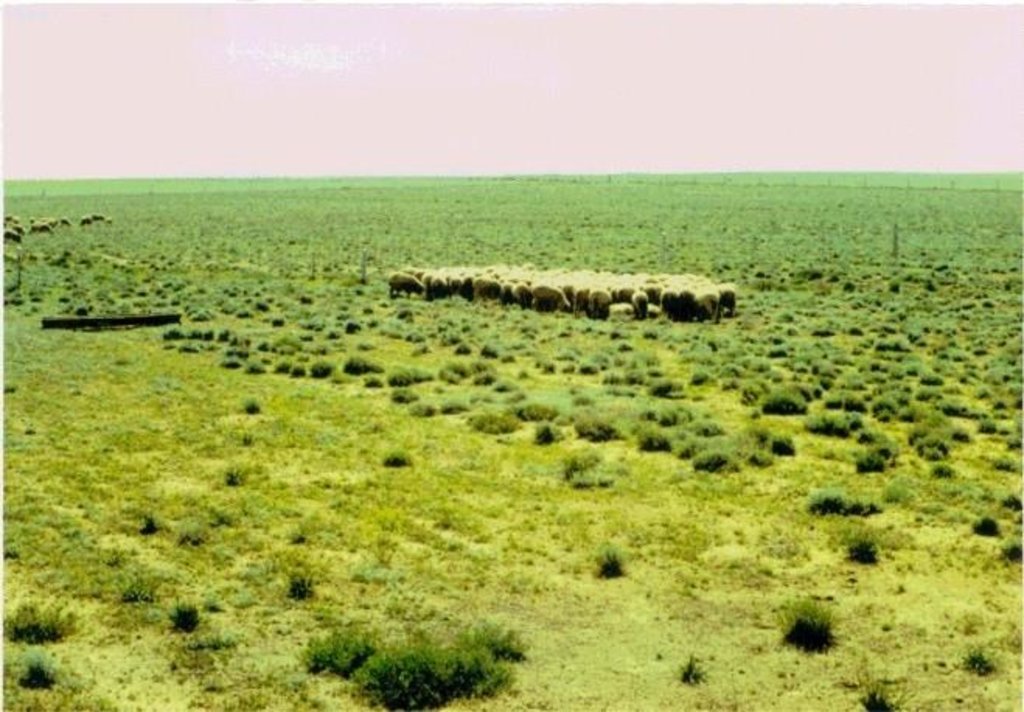Creation of artificial pasturable phytocenosis at north desert subzone [Kazakhstan]
- Création :
- Mise à jour :
- Compilateur : Unknown User
- Rédacteur : –
- Examinateur : David Streiff
Creation of artificial pasturable phytocenosis at north desert subzone
technologies_1093 - Kazakhstan
Voir les sections
Développer tout Réduire tout1. Informations générales
1.2 Coordonnées des personnes-ressources et des institutions impliquées dans l'évaluation et la documentation de la Technologie
Personne(s)-ressource(s) clé(s)
Spécialiste GDT:
Yurchenko Vladimir
8-(3272)-21-55-29
SPC for livestock husbandry and veterinary, Ministry of agriculture of the Republic of Kazakhstan
Kazakhstan
Spécialiste GDT:
Alimaev Ilya
8-(3272)-21-44-46
alimaev@nursat.kz
SPC for livestock husbandry and veterinary, Ministry of agriculture of the Republic of Kazakhstan
51, Jandosov Str., Almaty480035, RK
Kazakhstan
Spécialiste GDT:
Sisatov Jeksembai
8-(3272)-99-52-34
SPC for livestock husbandry and veterinary, Ministry of agriculture of the Republic of Kazakhstan
Kazakhstan
Spécialiste GDT:
Kildibekova Guliya
8-(3272)-39-39-07
SPC for livestock husbandry and veterinary, Ministry of agriculture of the Republic of Kazakhstan
Kazakhstan
Nom du ou des institutions qui ont facilité la documentation/ l'évaluation de la Technologie (si pertinent)
Ministry of Agriculture of Kazakhstan (MoA) - Erythrée1.3 Conditions relatives à l'utilisation par WOCAT des données documentées
Quand les données ont-elles été compilées (sur le terrain)?
28/12/2003
Le compilateur et la(les) personne(s) ressource(s) acceptent les conditions relatives à l'utilisation par WOCAT des données documentées:
Oui
2. Description de la Technologie de GDT
2.1 Courte description de la Technologie
Définition de la Technologie:
Selection fodder plants and the technology of their cultivation for maximal use of poor soil water in desert
2.2 Description détaillée de la Technologie
Description:
1. .Artificial fodder rangelands in desert are created in strong degraded sites by sowing of fodder subshrubs and perennial forbs.
2. The list of the fittest fodder plants, which can maximally effective use the poor desert soil resources, is established
3. The most capable plants belong to Chenopodiacia family: Kohia p., Salsola o., Ceratoides p., Artemisia t., to Areminea family – Agropyrum desertorum.
4. The preparation of soil for sowing is of sparing sort of under-winter ploughing (spike-tooth disk harrow). Sowing of subshrubs is carried out under winter in treated soil with sowing standard 2 million germinating seeds per 1 hectare. Agropyrum d. is sowed in early spring. Before sowing seeds are mixed in equal quantities at total sowing standard 2 million germinating seeds per 1 hectare.
5. The grazing is prohibited in the first year. It is possible to use the sowed site moderately since the latter half of the second year.
The cost of 1 hectare is 2700-3100 tenge with taking into account petrol, salary etc..
2.3 Photos de la Technologie
2.5 Pays/ région/ lieux où la Technologie a été appliquée et qui sont couverts par cette évaluation
Pays:
Kazakhstan
Région/ Etat/ Province:
Jambyl, Almaty oblasts.
Autres spécifications du lieu:
South Pribalkhashye, Eastern part of sand Moynkum massif
2.6 Date de mise en œuvre de la Technologie
Si l'année précise est inconnue, indiquez la date approximative: :
- il y a moins de 10 ans (récemment)
2.7 Introduction de la Technologie
Spécifiez comment la Technologie a été introduite: :
- grâce à l'innovation d'exploitants des terres
Commentaires (type de projet, etc.) :
SPCLHV( Scientific Production Centre for Livestock Husbandry and Veterinary)
3. Classification de la Technologie de GDT
3.1 Principal(aux) objectif(s) de la Technologie
- améliorer la production
- créer un impact économique positif
3.2 Type(s) actuel(s) d'utilisation des terres, là où la Technologie est appliquée

Pâturages
Pâturage extensif:
- Nomadisme
- Semi-nomadisme/ pastoralisme
Pâturage intensif/ production fourragère :
- Prairies améliorées
Principales espèces animales et principaux produits:
Nomadism: Small percentage
Semi-nomadism / pastoralism: the majority of small stock breeders – up to 80%
Improved pasture: dry – desert pastures
Commentaires:
Major land use problems (compiler’s opinion): The pasture production decline, containment of livestock husbandry development, low living standards of stock-breeders
Major land use problems (land users’ perception): Complication of animal maintenance, worsening of abode ecological conditions, forced migration
3.3 Informations complémentaires sur l'utilisation des terres
Approvisionnement en eau des terres sur lesquelles est appliquée la Technologie:
- pluvial
Nombre de période de croissance par an: :
- 2
Précisez:
Longest growing period in days: 180; Longest growing period from month to month: Mar - Oct; Second longest growing period in days: 45; Second longest growing period from month to month: Sep - Oct
3.4 Groupe de GDT auquel appartient la Technologie
- amélioration des variétés végétales, des races animales
3.5 Diffusion de la Technologie
Spécifiez la diffusion de la Technologie:
- répartie uniformément sur une zone
Si la Technologie est uniformément répartie sur une zone, indiquez la superficie couverte approximative:
- 100-1 000 km2
Commentaires:
Total area covered by the SLM Technology is 8000 km2.
up to 1991 25-30 thousand hectares were created with such method in South-East of Kazakhstan.
3.6 Mesures de GDT constituant la Technologie

pratiques agronomiques
- A1: Couverture végétale/ du sol
- A3: Traitement de la couche superficielle du sol
- A5: Gestion des semences, amélioration des variétés

pratiques végétales
Commentaires:
Main measures: agronomic measures
Secondary measures: vegetative measures
Type of agronomic measures: early planting, relay cropping, mixed cropping / intercropping, minimum tillage
3.7 Principaux types de dégradation des terres traités par la Technologie

érosion hydrique des sols
- Wt: perte de la couche superficielle des sols (couche arable)/ érosion de surface
3.8 Prévention, réduction de la dégradation ou réhabilitation des terres dégradées
Spécifiez l'objectif de la Technologie au regard de la dégradation des terres:
- restaurer/ réhabiliter des terres sévèrement dégradées
4. Spécifications techniques, activités, intrants et coûts de mise en œuvre
4.2 Spécification/ explications techniques du dessin technique
Technical knowledge required for field staff / advisors: high
Technical knowledge required for land users: moderate
Main technical functions: improvement of ground cover
Early planting
Material/ species: Agropurum
Relay cropping
Material/ species: subshrubs
Mixed cropping / intercropping
Material/ species: subshrubs
Minimum tillage
Remarks: 8-10cm
Vegetative measure: strip width 25-50 m with the some spacing
Vegetative material: O : other
Number of plants per (ha): 30-30
Spacing between rows / strips / blocks (m): 25-50
Vegetative measure: Vegetative material: O : other
Other species: Combination of Kochia+Solsola+Artemisia+Ceratoides
Diversion ditch/ drainage
Spacing between structures (m): 1
Depth of ditches/pits/dams (m): 0,3
Width of ditches/pits/dams (m): 0,5
Length of ditches/pits/dams (m): 500,0
Construction material (earth): The ground wich dug from channels used for strengthening of board
Construction material (other): The polyethylene film cover a bottom of the channal
4.3 Informations générales sur le calcul des intrants et des coûts
Indiquez la monnaie utilisée pour le calcul des coûts:
- dollars US
Indiquez le coût salarial moyen de la main d'œuvre par jour:
7.00
4.4 Activités de mise en place/ d'établissement
| Activité | Type de mesures | Calendrier | |
|---|---|---|---|
| 1. | sowing | Végétale | november |
| 2. | Inspection of territories | Structurel | In the spring cropping sea sun |
| 3. | Excavation of channals | Structurel | Before cropping |
| 4. | Creation a drain | Structurel | After planting |
4.5 Coûts et intrants nécessaires à la mise en place
| Spécifiez les intrants | Unité | Quantité | Coûts par unité | Coût total par intrant | % des coût supporté par les exploitants des terres | |
|---|---|---|---|---|---|---|
| Main d'œuvre | All the Labour | ha | 1,0 | 9,0 | 9,0 | 100,0 |
| Equipements | Machine use | ha | 1,0 | 13,0 | 13,0 | 100,0 |
| Matériel végétal | Seeds | ha | 1,0 | 16,0 | 16,0 | 100,0 |
| Coût total de mise en place de la Technologie | 38,0 | |||||
Commentaires:
Duration of establishment phase: 12 month(s)
4.6 Activités d'entretien/ récurrentes
| Activité | Type de mesures | Calendrier/ fréquence | |
|---|---|---|---|
| 1. | Soil surface treatment | Agronomique | autumn / 1 time. |
| 2. | Harrowing | Agronomique | autumn / 1 time. |
| 3. | Sowing of subshrubs | Agronomique | November, December. / 1 time. |
| 4. | Sowing of Agropyrum with postsowing packin | Agronomique | March / 1 time. |
| 5. | harrowing | Végétale | early /1 time |
| 6. | Inspection of the channels state of drainage film | Structurel | before watering/4-5 times |
| 7. | Replacement of a drainage film | Structurel | before watering/as reguired 4-5 times |
4.7 Coûts et intrants nécessaires aux activités d'entretien/ récurrentes (par an)
| Spécifiez les intrants | Unité | Quantité | Coûts par unité | Coût total par intrant | % des coût supporté par les exploitants des terres | |
|---|---|---|---|---|---|---|
| Main d'œuvre | All the labour | ha | 1,0 | 3,0 | 3,0 | 100,0 |
| Equipements | Machine use | ha | 1,0 | 4,0 | 4,0 | 100,0 |
| Coût total d'entretien de la Technologie | 7,0 | |||||
Commentaires:
Machinery/ tools: .tractor ÌÒÇ, flat hoe, seeder, roller
For conditions of degraded wormwood-ephemeron pastures in light clay sand carbonate serozems in north kazakhstan desert subzone
4.8 Facteurs les plus importants affectant les coûts
Décrivez les facteurs les plus importants affectant les coûts :
value of petrol
5. Environnement naturel et humain
5.1 Climat
Précipitations annuelles
- < 250 mm
- 251-500 mm
- 501-750 mm
- 751-1000 mm
- 1001-1500 mm
- 1501-2000 mm
- 2001-3000 mm
- 3001-4000 mm
- > 4000 mm
Spécifiez la pluviométrie moyenne annuelle (si connue), en mm:
227,00
Zone agro-climatique
- aride
North Kazkhstan desert
5.2 Topographie
Pentes moyennes:
- plat (0-2 %)
- faible (3-5%)
- modéré (6-10%)
- onduleux (11-15%)
- vallonné (16-30%)
- raide (31-60%)
- très raide (>60%)
Reliefs:
- plateaux/ plaines
- crêtes
- flancs/ pentes de montagne
- flancs/ pentes de colline
- piémonts/ glacis (bas de pente)
- fonds de vallée/bas-fonds
Zones altitudinales:
- 0-100 m
- 101-500 m
- 501-1000 m
- 1001-1500 m
- 1501-2000 m
- 2001-2500 m
- 2501-3000 m
- 3001-4000 m
- > 4000 m
Commentaires et précisions supplémentaires sur la topographie:
Altitudinal zone: 490-510 m a.s.l.
5.3 Sols
Profondeur moyenne du sol:
- très superficiel (0-20 cm)
- superficiel (21-50 cm)
- modérément profond (51-80 cm)
- profond (81-120 cm)
- très profond (>120 cm)
Texture du sol (de la couche arable):
- grossier/ léger (sablonneux)
Matière organique de la couche arable:
- faible (<1%)
Si disponible, joignez une description complète du sol ou précisez les informations disponibles, par ex., type de sol, pH/ acidité du sol, capacité d'échange cationique, azote, salinité, etc.
Soil depth on average: Dust content is up to 80% in autumn
Soil texture (topsoil): Clay sand light serozems
Soil fertility is very low with a humus content of 0.8-1.2%
Topsoil organic matter: 0.8-1.2%
Soil drainage / infiltration is medium due to crushed stone base
Soil water storage capacity is in spring 17-21 and in autumn the producing moisture is lacking
5.6 Caractéristiques des exploitants des terres appliquant la Technologie
Orientation du système de production:
- commercial/ de marché
Niveau relatif de richesse:
- riche
- très riche
Indiquez toute autre caractéristique pertinente des exploitants des terres:
Population density: 10-50 persons/km2
Annual population growth: 0.5% - 1%
10% of the land users are very rich and own 10% of the land.
10% of the land users are rich and own 40% of the land.
10% of the land users are average wealthy and own 30% of the land.
60% of the land users are poor and own 10% of the land.
Market orientation of production system: The possibility of primary accumulation of circulating
5.7 Superficie moyenne des terres détenues ou louées par les exploitants appliquant la Technologie
- < 0,5 ha
- 0,5-1 ha
- 1-2 ha
- 2-5 ha
- 5-15 ha
- 15-50 ha
- 50-100 ha
- 100-500 ha
- 500-1 000 ha
- 1 000-10 000 ha
- > 10 000 ha
Commentaires:
It is complicated to evaluate the size of grazing land per household because the free grazing is practiced at lands appurtenant to rural akimats
5.8 Propriété foncière, droits d’utilisation des terres et de l'eau
Propriété foncière:
- communauté/ village
Droits d’utilisation des terres:
- accès libre (non organisé)
6. Impacts et conclusions
6.1 Impacts sur site que la Technologie a montrés
Impacts socio-économiques
Production
production agricole
production fourragère
qualité des fourrages
Commentaires/ spécifiez:
Increase of protein content from 4-5% to 11-14%
Autres impacts socio-économiques
Stabilization of traditional porture livestock husbandry
Commentaires/ spécifiez:
Increase of head and production quality improvement....
Impacts socioculturels
institutions communautaires
Impacts écologiques
Sols
couverture du sol
Commentaires/ spécifiez:
Stabilization
perte en sol
Quantité avant la GDT:
5
Quantité après la GDT:
0
Autres impacts écologiques
biodiversity
Commentaires/ spécifiez:
Enrichment of local wild flora
6.4 Analyse coûts-bénéfices
Quels sont les bénéfices comparativement aux coûts de mise en place (du point de vue des exploitants des terres)?
Rentabilité à long terme:
légèrement positive
Quels sont les bénéfices comparativement aux coûts d'entretien récurrents (du point de vue des exploitants des terres)?
Rentabilité à court terme:
positive
6.5 Adoption de la Technologie
- 10-50%
Si disponible, quantifiez (nombre de ménages et/ou superficie couverte):
12 households coverin 20 percent of stated area
Parmi tous ceux qui ont adopté la Technologie, combien d'entre eux l'ont fait spontanément, à savoir sans recevoir aucune incitation matérielle ou aucun paiement?
- 90-100%
Commentaires:
Comments on acceptance with external material support: survey results
12 land user families have adopted the Technology without any external material support
Comments on spontaneous adoption: survey results
There is a little trend towards spontaneous adoption of the Technology
Comments on adoption trend: stock breeders advantaged and of moderate means can allow the introduction of SWC-technology in small area for now
6.7 Points forts/ avantages/ possibilités de la Technologie
| Points forts/ avantages/ possibilités du point de vue de l'exploitant des terres |
|---|
|
providing of animals with fodder. How can they be sustained / enhanced? constantly |
|
improvement of ecological conditions in places of abode How can they be sustained / enhanced? constantly |
|
refusal from forced migration How can they be sustained / enhanced? constantly |
| Points forts/ avantages/ possibilités du point de vue du compilateur ou d'une autre personne ressource clé |
|---|
|
increased productivity of rangeland How can they be sustained / enhanced? .for 20 and more years |
|
localization of degradation centers How can they be sustained / enhanced? constantly |
|
assured feeding of animals with full fodder How can they be sustained / enhanced? 20 and more years |
|
Maintenance of biodiversity How can they be sustained / enhanced? constantly |
|
improvement of living standards of rural community people. How can they be sustained / enhanced? constantly |
6.8 Faiblesses/ inconvénients/ risques de la Technologie et moyens de les surmonter
| Faiblesses/ inconvénients/ risques du point de vue de l’exploitant des terres | Comment peuvent-ils être surmontés? |
|---|---|
| high one time expenses | state grants and awards, credits are needed |
| Faiblesses/ inconvénients/ risques du point de vue du compilateur ou d'une autre personne ressource clé | Comment peuvent-ils être surmontés? |
|---|---|
| Insufficient development of fodder plant seed-farming | arrangement schemes of primary and marketable seed-farming at research organizations and special farmings of oblasts; decreasing of petrol costs |
7. Références et liens
7.2 Références des publications disponibles
Titre, auteur, année, ISBN:
1.Agribiological aspects of creation and use of pasturable phytocenoses in north desert subzone. Abstract of doctoral thesis, Alimaev I., Almaty,. 2001.
Disponible à partir d'où? Coût?
Almaty, free. Tel 8-(3272) 21-44-76
Titre, auteur, année, ISBN:
2.Fodder production of south-east and east regions. /Pastures and haylands of Kazakhstan, Alimaev I., Isakov K., and others, Almaty. 1998.
Disponible à partir d'où? Coût?
Almaty, free. Tel 8-(3272) 21-44-76
Liens et modules
Développer tout Réduire toutLiens
Aucun lien
Modules
Aucun module trouvé


